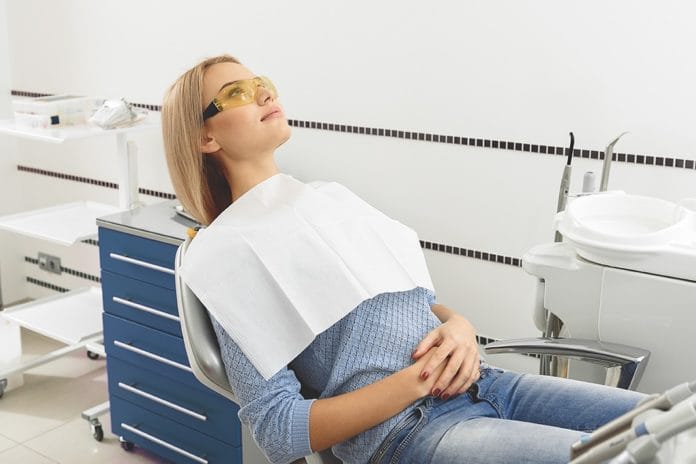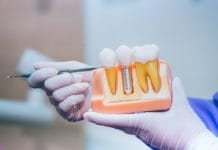It’s 2:56 pm, your next patient is expecting to be seen in 4 minutes, and you are still waiting for the doctor to show up for the exam! Your heart starts to race just a bit as you realize the next patient has not had a history of flexibility. If you have never felt this angst, please thank your doctor and pledge to work for him/her until you retire. For the rest of us, waiting for an exam is undoubtedly one of the most frustrating things hygienists encounter. Unfortunately, for some, it is a repeat offense.
You do have options. Take a proactive approach to reduce the lying in wait phenomenon.
Make It All About the Patient
Patients need processing time to understand diagnosed treatment recommendations. It is helpful for patients to have the hygienist available to support the doctor’s diagnosis and answer questions. This is impossible when that exam occurs at 2:56 pm with a 3 pm patient waiting in the reception area. Those patients get the hot potato handoff to the front desk team! The patient may not have questions initially for the doctor, but every hygienist knows that same patient will have questions for the hygienist as they think through the treatment further.
The bottom line: late exams rob the patient’s processing time. Exams that occur in the middle of the appointment, after necessary radiographs and charting have taken place, show an increased case acceptance. Repeat this statement: Increased case acceptance. This is a sure-fire method to get your doctor’s attention!
Choreograph the Handoff
The hygienist can be instrumental in streamlining the exam process. Once your doctor gets used to the streamlined approach, they will be more likely to come in sooner for exams. Plan to provide all the information the doctor will need in a concise, consistent manner. I like to call it the “nutshell” approach. This includes the chief concern, periodontal status, restorative status, and cosmetic interests. The handoff should take the hygienist approximately one minute while saving 5-10 minutes for the doctor. It might sound like this:
“As you know, Mary takes great care of her teeth. She has been coming in every three months, which is working well. (periodontal status) She did remember that you recommended a crown on the upper right three months ago and is still planning to get that scheduled. (restorative status) She would also like to hear any options you have to improve the appearance of the front tooth that is slightly darker in color than her other teeth. (cosmetic interests).
It could also sound like this:
“As you know, Mary works hard on her teeth. She has been coming in every six months, which has worked well in the past. Today I discovered gum disease and deeper probing depths on the upper right and lower right. She is willing to come in for periodontal therapy if you feel she would benefit from that treatment. (periodontal status) She did remember that you recommended a crown on the upper right three months ago and would like to review that again with you. (restorative status) She is aware of the darker color of her top front tooth, but it currently is not a cosmetic concern for her. She knows she can get options from you should it become a concern down the road.” (cosmetic interests)
Please note that at no point is the hygienist providing a diagnosis, just the facts and interest level of the patient. A streamlined handoff helps direct the doctor during the exam. The RDH peels back the onion with the patient to know if they are ready to hear additional treatment options or not. If the patient is not ready, save everyone time and relay the information in a graceful manner, just like our scripting example above. This also gives the patient an opportunity to correct the hygienist. Perhaps the darker tooth was not a concern initially, but now they are curious as to options. That is a bonus! Your doctor will look forward to the consistency of this transition, and you will look forward to earlier, more concise exams.
If Your State Allows, Offer to Provide Anesthetic While the Doctor Does the Exam
It is important to note that the offer to do anesthetic does not preclude the transition of the periodontal, restorative, and cosmetic information. Plan to take the extra one minute to give the “nutshell” information and then excuse yourself to do the anesthetic while the doctor does the clinical exam. Ideally, the assistant takes over and sits for the exam to record findings, perhaps even taking over to polish and floss where allowed.
Review Scheduling Protocols
The schedule is a giant puzzle that needs the right piece in the right place. If the strategy is to fill every opening with any patient, chaos ensues, and exams occur later and later. Ideally, schedule the doctor with high-profit production in the morning while the hygienist treats patients that need periodontal therapy (SRP) or periodontal maintenance without exams. It can be hard for the doctor to break from treatment that requires a high level of focus, so limit this interruption with smart scheduling.
In the afternoon, the doctor does smaller procedures that allow more free time while the hygienist treats patients that need exams. It creates a win for everyone; the doctor, the hygienist, and the patient. This type of scheduling benefits the front office as well as they are not presenting treatment throughout the day due to scattered exams.
Communicate
The morning huddle is an ideal time to identify patients that may need a longer exam. Perhaps the patient is a friend with the doctor or has a large, unscheduled treatment plan. Planning for those situations early in the day will reduce stress. Identify an overflow operatory and set it up ahead of time for these situations.
Above all else, take a few minutes to breathe deeply and know that you cannot always control your timing. Thank the patient for waiting rather than apologizing. Apologizing sends a message that you willingly made them wait. Thanking the patient for waiting is a subtle difference, but often changes the tone and promotes positive communication.
Before you leave, check out the Today’s RDH self-study CE courses. All courses are peer-reviewed and non-sponsored to focus solely on high-quality education. Click here now.












